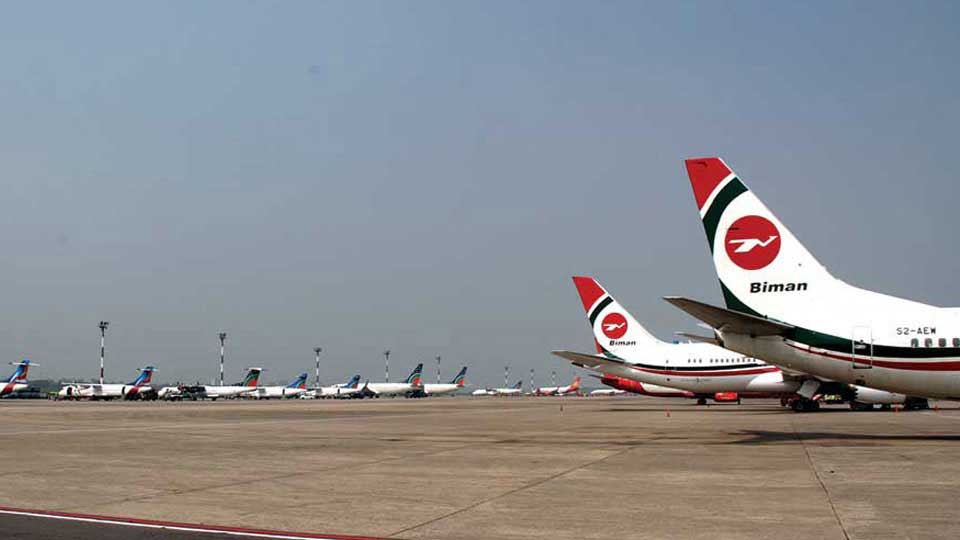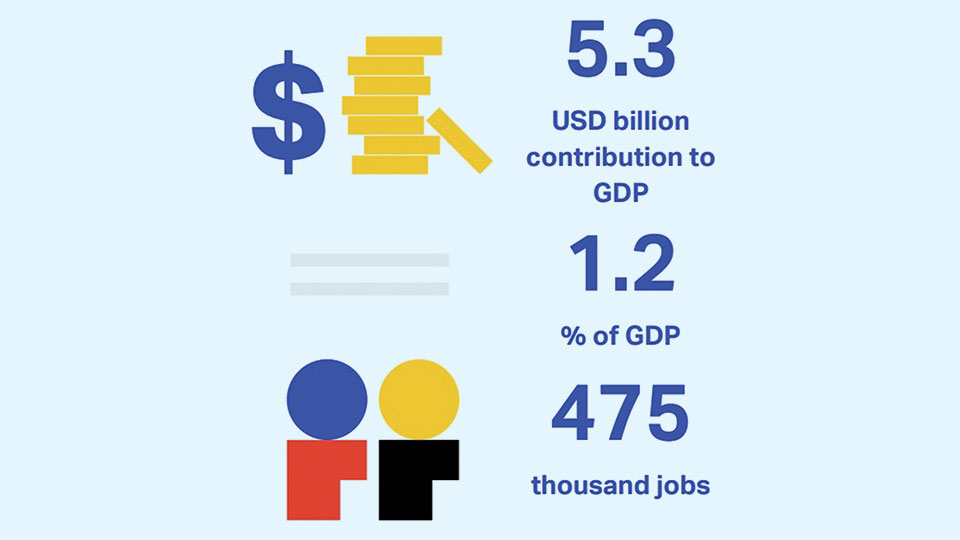
Dhaka : Bangladesh's aviation industry is stepping into the spotlight as one of the nation's fastest-growing economic engines, with new data showing its contribution to jobs, growth, and tourism is far larger than previously recognized. Once viewed primarily as a manpower export channel, the country's skies are now being positioned as a launchpad for future prosperity.
According to the International Air Transport Association (IATA), the air transport sector contributes USD 5.3 billion annually to Bangladesh's economy - equivalent to 1.2 percent of GDP - and supports nearly 475,000 jobs. Of that, USD 2.4 billion comes from direct aviation activity, such as airlines, airports, and ground services, employing 29,200 people directly. The ripple effect spreads through supply chains, tourism, and household spending, touching nearly every corner of the economy.
"Bangladesh is no longer just a manpower-exporting na-tion," said a senior civil aviation official. "We are on the cusp of becoming a regional hub for trade, travel and investment."
Growth trajectory: A 160pc takeoff
The future looks even brighter. IATA projects that by 2038, Bangladesh's air transport market will expand by 160 percent - adding 140,000 new jobs and contributing another USD 2.1 billion to the economy. Passenger departures are forecast to rise by more than 12 million annually, reflecting the surge in middle-class travel, outbound tourism, and migrant worker flows.
Bangladesh already ranks as the 51st largest market globally by passenger departures, with traffic growing 74.5 percent in the past decade. Popular routes highlight the country's global ties: Jeddah, Kuala Lumpur, Riyadh, Dubai and London dominate outbound travel.
Opportunities, bottlenecks
Industry insiders warn, however, that bottlenecks in infrastructure and regulation could stall progress. Hazrat Shahjalal International Airport in Dhaka remains heavily congested, with new terminal projects delayed. Regional airports in Sylhet, Chatto-gram, and Cox's Bazar remain underutilized due to connectivity issues and limited international operations.
"The demand is there, but capacity lags far behind," said an aviation analyst. "If Bangladesh wants to compete with hubs like Bangkok, Kuala Lumpur, or even Colombo, massive upgrades in infrastructure, service quality, and regulation are essential."
Tourism: from crisis to recovery
The aviation story is tightly interwoven with Bangladesh's broader tourism industry. According to the World Travel and Tourism Council (WTTC), the sector lost BDT 26,490 crore (USD 3.1 billion) in 2020 during the pandemic, with more than 400,000 jobs wiped out.

However, recovery has begun. From the Sundarbans to Cox's Bazar, eco-tourism and domestic travel are rebounding. A 2021 academic study estimated the Sun-darbans alone provide USD 53 million in annual tourism value, which could grow substantially with better visitor facilities, sustainable infrastructure, and wildlife observation projects.
"Tourism is an untapped goldmine," said a Dhaka Univer-sity researcher. "How-ever, without strong air connectivity, it will never reach its full potential."
Big picture: beyond RMG
Economists suggest aviation and tourism could become Bangladesh's next "RMG moment." With the ready-made garment sector facing growing international competition, tariff issues, and sustainability pressures, a diversified economy is essential.
"Aviation and tourism together can be the next frontier," argued an industry economist.
"They bring not only foreign exchange, but also global exposure, technology transfer, and soft power.
However, the window of opportunity is limited. If we fail to act, neighboring hubs will take the lead."
Skies ahead
As Bangladesh celebrates record-breaking air passenger growth and cautiously optimistic tourism recovery, the message is clear: the nation's skies are becoming one of its most valuable assets.
The question now is whether policymakers, industry leaders, and investors can rise to the challenge and chart a flight path toward sustainable, inclusive growth.
In the words of one veteran airline executive : "The next big story of Bangladesh will not only be stitched in factories. It will be written in the skies."









